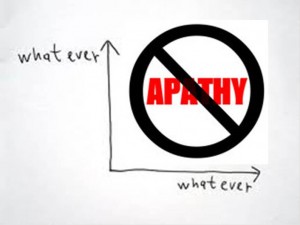Warning! This post is not politically correct!
Hey, you! Yes, you! Listen up! I’m talking to you! Pay attention!
Your future depends on it! Don’t make me take you by the shoulders and shake you to get you to listen to me! READ THIS and act upon it!
If you don’t, you are part of the problem I am talking about in this post. So goodbye. Don’t complain to me or to anyone else about your lot in life if you are too apathetic to read this post and act upon it. You deserve what you get. What other people deign to give you.
Are you happy with the way things are going in your life, your job, your city, county, state and country? If you can answer “yes” to that question I would really like to meet you and find out how you have achieved such peace, success, happiness, prosperity and nirvana.
If not, what are you doing about it?
I think that many of the so-called “leaders” in this country have gone nuts. They send people to foreign countries to die. Then they refuse to take care of them when they come home wounded and damaged. What are you — yes you, personally — doing about it? My guess is nothing. Because you are apathetic.
Our “leaders” have this country spending huge amounts of money on weapons — many of them unnecessary and unwanted. Half of those amounts could wipe out hunger and poverty in this country in a day! What are you — yes you, personally — doing to make that happen? My guess is nothing. Because you are more interested in how you might get some of that money than in the larger picture. You’re not apathetic when it comes to getting some for yourself, are you? But your apathy sure comes into play when someone you don’t know is affected.
We send money to our “enemies” so that they can buy weapons from us to start wars with our “friends” who also buy weapons from us. Then we lament such terrible losses of life. Bullshit, I say! Stop the hypocrisy! Stand up and say “enough!”
But are you doing that? You don’t know these people tens of thousands of miles away who’ve been killing each other for thousands of years and are, frankly, never going to stop. They breed, preach and practice hate, for heaven sake. They always have and they always will!
Why are we sending them money for weapons without building a wall around them? Then they can kill each others to their heart’s content. And, hopefully, there won’t be enough of them left to hurt the rest of us. When was the last time you stood up and loudly told our “leaders” that enough is enough? My guess is that most of you answer that question with “never.” You’re just plain too apathetic.
Maybe you’re just too enthralled and engaged with the latest high-tech gadgets, or the fanciest cars, or the newest fads to worry about tomorrow. Or your fellow human beings. If that’s you, enjoy it while you can. Because your apathy is eventually going to kill that lifestyle. And your future.
Or maybe, like many of us, you’re just very busy urgently trying to scratch out a living in this crazy world to make time to do the important things that will benefit us all in the long term. I can empathize with that, even while I’m ranting about all this other stuff. But it doesn’t mean you get to be apathetic when it comes to the political, economic and environmental issues that are going to affect your children and their children. We need to pay attention to both the urgent and the important, no matter how difficult that is!
We have people in positions of power in the federal and state governments who are just plain nutso (a non-politically correct term for out of their “f-ing” minds)! They are convinced that making sure that we are all armed with automatic weapons will lower the rate of deaths by bullets. In Colorado, for crying out loud, you can be made to pay for damages to the gun and ammunition sellers if you sue them because one of their customer’s guns or bullets killed your kids!
The governor of Texas thinks that the federal government is getting ready to invade the state and then sell it to Mexico — or China? What kind of people elected this kind of idiot? Crazy people. What kind of people can get rid of this kind of idiot? Sane people. But the sane people are totally apathetic! So they don’t vote these kinds of fools out of office. They simply suffer and complain. And a lot of good that does. And this kook wants to run for the office of the President of the United States! Maybe we should send them overland in big boats to China as the former Governor or Alaska once suggested.
Don’t even get me started on women’s rights! Some of “our” people in the US Congress and the Senate don’t believe that women should have the right to methods to prevent pregnancy. Nor to abort unwanted pregnancies — even those caused by rape. Some of these people actually think that there is such a thing as “legitimate” rape! Where do these people come from and why are they still in positions of power? Because we — and I include myself — have been too apathetic to throw the bastards out!
They pay for Viagra so that men can screw women for hours on end, whether the women want it or not. But they don’t want to pay for birth control. And they don’t want to pay for care for the illegitimate children that result from these kinds of activities. They don’t have a clue that their own votes as supposed representatives of “the people” are so screwed up as to classify them as psychopaths! But have we gotten rid of them? Nope.
APATHY IS KILLING OUR FUTURE!
We have got to put a stop to the craziness! We have got to begin to speak the truth again — political correctness be damned! We have got to reject bullshit in the media when it is clearly biased bullshit! We have got to reject religious zealots who pervert the preachings of their “Gods” to justify hate and genocide! We have got to stop letting people who wish to live in America continue to bad-mouth it and try to destroy it. We have got to get our leaders to stop giving money to these fanatics.
Standing up, saying “enough is enough,” voting out the crazies and the greedy and the pocket liners — and their corporate backers — may mean some short-term pain. But it will certainly lead to some long-term gain! If WE — YOU and ME — stand up and force the needed changes to happen. If we can find a way to overcome our apathy.
We have got to stop people in Congress from betraying the Social Security contract with the American people. This contract IS NOT AN ENTITLEMENT! We who have worked all our lives, and who continue to work — voluntarily or out of necessity — have paid, and continue to pay, billions of payroll dollars into this fund so that we will have something to support us when we are forced to retire. SOCIAL SECURITY IS NOT AN ENTITLEMENT and the irresponsible misogynists current in power need to be made to understand that or they need to be removed from their offices.
THERE ARE SOLUTIONS TO THESE PROBLEMS! This country was built on creating and implementing solutions that increased productivity and prosperity. We’ve done it before and we can do it again. If we can get rid of the impediments — many of our current “leaders.” But voter turnout is at all time lows. Why? Because we are simply apathetic! Or too burdened but what these “leaders” have done to us to have the time, energy and money to stand up to them and say “NO MORE!”
The 1% have the money and the power to keep these people in power. They own our elected representatives. They own our economy. They own us! If you’ve never listened to George Carlin, may he rest in peace, you should do so now. Unless you don’t care. Unless you think someone else should or will solve these problems. But if you don’t do it, who will? Nobody.
AND YOUR APATHY WILL KILL YOUR FUTURE!
On a personal level, are you saving enough money to support yourself when you are too old to work? Or when you are forced out? Or when you are replaced? The time to start taking care of that issue is now! Not tomorrow, not next week, not next month and not next year. NOW! Because I don’t think that we’re going to find a cure for apathy anytime soon. And that means that we had all better start looking out for ourselves. No one else will, especially those who run our country and our economy. The vast majority of these people are only out for themselves.
Do you have enough life insurance to support your loved ones if you get hit by a bus — or a beer truck — tomorrow? If not, you should probably rectify that situation. And not tomorrow, next week, next month or next year. NOW! Because safety nets from our government are going to continue to disappear.
Do you have disability insurance to replace your income if you are injured or become seriously ill for a long time? I don’t mean group disability from your company, which may pay for injury but not for sickness and will maybe pay for 60% that will be taxed so that you are forced to live on 40% of your normal take-home pay. I mean disability insurance coverage to fill that 60% gap that YOU OWN!
Have I got your attention yet? I really don’t mean to be a “the sky is falling” kind of guy. But at my age — 68, by the way — I’ve seen way too much and, according to my spouse, spent way too much time yelling at the television when I hear about what is going on. I don’t consider myself a conspiracy nut, but I sure do wonder what is happening behind the scenes when our attention is directed to the trumped-up crisis or disaster of the day.
I know, there are many who will say that we can’t do anything about that. Why should we try? As individuals, is it true that we don’t have the resources or the power to fix things? Is the system too big and destined grind us down? Does that mean that we just shouldn’t try? I don’t think that it has to be this way! I believe we can make things better. It will take work but it can be done. To believe otherwise is to surrender. To become totally apathetic.
So I say it this one last time in conclusion: YOUR APATHY WILL KILL YOUR FUTURE! Please don’t let that happen. I have decided to fight in every way that I can and I hope I can inspire you to do the same. Let’s not let the bastards grind us down. Let’s register to vote. Let’s vote! Let’s expose the crazies for who they are and get rid of them. Let’s insist that our leaders work for us and not just for themselves. Let’s insist that they honor the commitments this country has made to us — and especially to the members of our armed services who defend us.
Let us seize each day by doing at least one small thing to make the world a better place. Because if I don’t do it nobody else will. And that goes for you, too.



 at
at
 I had the book printed on very nice paper and the hard cover was a walnut veneer with gold printing. Very good looking and conveying very high quality. The book was titled “Design for Testability” and I priced it at $95. That’s $95 in 1978 dollars, which today would be roughly $347. For a 77-page book in 8-1/2” x 11” format.
I had the book printed on very nice paper and the hard cover was a walnut veneer with gold printing. Very good looking and conveying very high quality. The book was titled “Design for Testability” and I priced it at $95. That’s $95 in 1978 dollars, which today would be roughly $347. For a 77-page book in 8-1/2” x 11” format.




